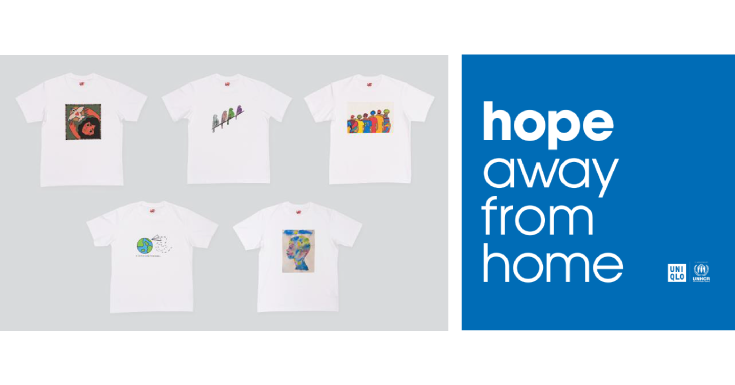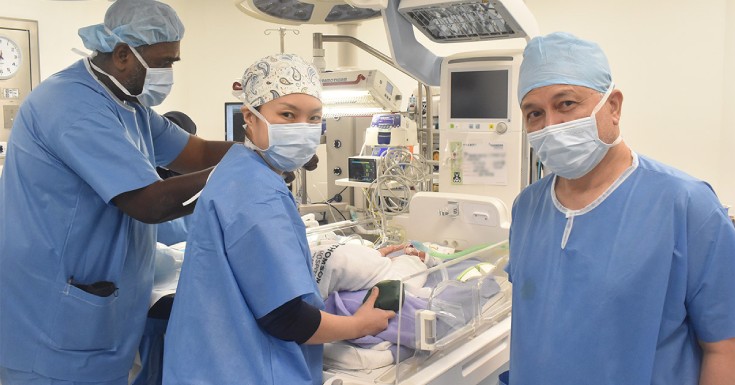10 Common Childhood Illnesses and How to Treat Them
When children work and play together in groups, this environment provides an opportunity for the spread of a number of common childhood diseases that can be passed on from one child to the next. Some of the common illnesses that will be covered include fever, cough, cold and eczema.
In conjunction with the World Children’s Day 2015, we bring to you a quick guide to 10 common childhood illnesses every parent should know. Early recognition of the illness and prompt treatment can significantly reduce the spread within the group setting.
Table of Contents
1. Constipation
Constipation means passing hard stools with difficulty, with stools that are hard. A child who is constipated has bowel movements fewer than three times a week (or less often than normal) as well as difficulty to pass motion. Symptoms that can occur along with constipation are frequent tummy aches and bloatedness, poor appetite and the child being more irritable.
Various factors may contribute to the developing or worsening of constipation. These include diet, and may happen during transition from breast milk to formula milk, or when solid foods are introduced; stool holding when the child does not want to interrupt playtime; change in routine especially during the introduction of potty training when the child becomes afraid of using the potty; lack of physical activity and in some rare occasions, constipation in children indicates a digestive system problem. To treat constipation, children can be fed with a high-fibre diet which includes fruits, vegetables, whole grain cereals and bread, in addition to drinking lots of water throughout the day, along with some milk.
2. Cough and cold
It is normal for any infant to get cough and cold, often associated with a runny or blocked nose, with episodes of sneezing. Most cases of cough and cold are caused by different viruses, which can range from mild to severe, and in some cases, can cause severe symptoms in premature babies. However, one needs to be aware that cough and cold are different from flu. The former is classified as simple cold, while the latter can cause babies to develop flu like avian or swine flu, caused by influenza virus like H1N1.
In cases of flu, the symptoms are more prolong and serious, compared to simple cold. In majority of cases, there are no complications. Even without treatment, infants can recover fully. As all cases are transmitted through saliva droplets of infected people, it is important that your baby is kept away from those who are ill. Also, wearing a face mask will help. It is important to continue breastfeeding so your antibodies will pass through the breast milk to provide protection for your baby.
3. Ear Infection
The ear is made up of three parts; the “outer ear” includes the part that you can see and the canal that leads to the eardrum. The “middle ear” is separated from the outer ear by the eardrum and contains tiny bones that exemplify sound. The “inner ear” is where sounds are translated to electrical impulses and sent to the brain. Any of these parts can become infected by bacteria, fungi or viruses. It is estimated that around four out of five children will experience some kind of ear infection at least once. Types of ear infection include:
i) Otitis Externa (outer ear)
It can be caused by the trauma from cleaning with cotton-buds, fingernails, or can be triggered by exposure to polluted water. The symptoms include itching, sensation of fullness in the ear, pain and ear discharge. The outer ear may become red or swollen and hearing may be affected as well. Otitis Externa can be treated by cleaning up the ear canal and prescribing antibiotic eardrops to fight the infection.
ii) Acute Otitis Media (middle ear)
Otitis Media is an infection of the middle ear. Children are most commonly affected by acute otitis media because it is caused by colds and blocked Eustachian tubes due to the shorter and narrower tube. Sometimes the eardrum will burst, leading to pus in the ear canal. Usually the eardrum will heal again by itself. Most cases of otitis media will resolve on their own without treatment, so doctors may not prescribe any medication besides some pain and fever relief. Other treatment options may include prescription of antibiotics or eardrops.
4. Eczema
Eczema, also known as “atopic dermatitis”, is a chronic condition that affects around 10% of all infants and children. Eczema is a non-contagious, inflammatory skin condition that is characterised by severely red and dry skin usually on the face, arms and knees, excessive itching and scaly rashes. The appearance of eczema differs in each individual and from one occurrence to another. It is caused by endogenous (genetic) or exogenous (environmental) stimuli. Treating eczema requires treating both skin dryness and skin inflammation. Anti-inflammatory medications, like topical steroids are used to treat inflammation.
5. Febrile Seizure
Febrile seizures, also known as fever seizures, are particularly common in toddlers. This type of seizure occur when a child contracts ear infection, cold or chickenpox accompanied by fever, which is different from epilepsy, since epilepsy is characterised by recurrent convulsions that is not triggered by fever. During febrile seizure convulsions, the child’s body usually becomes rigid while the limbs shake. Although febrile seizures can be frightening to parents, it is important not to panic and remain calm. As most convulsions are harmless, most children do not require any medication.
To prevent accidental injuries, place the child on a safe surface such as on the floor and placed on her side to prevent choking. Never place anything into the child’s mouth, as objects placed could be broken and obstruct the child’s airway. Stay close to the child until the convulsion has ended and comfort the child. Once the convulsion ends, the child should be brought to the doctor for assessment.
6. Eye problem
In the first few months of life, infants can only see clearly objects that are 8 to 10 inches from their face. It isn’t until the age of two to four months that their eyesight begins improving, and start showing some interest in their surroundings. If a baby does not show visual attention by this time, parents should watch out for abnormal eye signs, which include a white reflex in the pupil, and a hazy appearance of the cornea. These often indicate the presence of a serious condition, such as cataract (cloudy lens), glaucoma (high eye pressure), or even retinoblastoma (eye cancer). Other common vision issues are neonatal conjunctivitis and “lazy eye” (amblyopia). If you noticed any of these, bring your child to an eye specialist immediately, and never wait until the child is a “little older”, as it will be too late by then.
7. Fever and rash
Fever and rash are very common in babies and young children. One of the most common infections is called Roseola, a viral illnesss that most commonly affects young kids aged between six months and two years. Roseola is usually marked by several days of high fever, mild diarrhoea, followed by a distinctive pinkish-red, spotty rash on the baby’s tummy and chest. The rash’s spot turn white when touched, and individual spots may have a lighter “halo” around them, which will fade in approximately two days. The rash is generally not itchy. The high fever associated with Roseola can sometimes cause a febrile convulsion, which usually does not cause any harm.
8. Abdominal pain
Abdominal pain is often reported by children as stomach pain or tummy pain; it is one of the commonest complains among children. Stomach pain can be hard to diagnose, for example, two kids with the same problem may react differently. Abdominal pain can be divided into functional abdominal pain (i.e. without cause) and organic abdominal pain (with cause). Usually, functional abdominal pain centres at the umbilicus (belly button), and the pain may occur suddenly or slowly increase in severity. Fortunately, most children with functional stomach pain get better on their own or with treatment.
Eliminating lactose (a natural sugar in milk and other dairy products) from the diet may benefit those who suffer from functional abdominal pain. On the other hand, some common causes of organic abdominal pain in children include constipation, urinary tract infection, acute gastroenteritis and flatulence. If this happens, bring your child to see the doctor to decide if any testing is warranted.
9. Urinary tract infection
Urinary tract infections (UTIs) are fairly common among children, but not usually serious. The urinary tract is where our bodies make and get rid of urine. It comprises the kidneys, and stretches out to the ureters (the tubes connecting the kidneys to the bladder, down to the bladder, and finally the urethra (the tubes that carries urine out of the body). Infants and toddlers usually present non-specific symptoms such as fever, excessive crying, vomiting and poor feeding. In older children, characteristic symptoms of UTI include pain during urination, needing to urinate frequently, and urgency (feeling a compelling urge to urinate) or even bedwetting. One way of confirming UTI is through a urine culture, indicating the bacterial cause as well as antibiotic sensitivity profile. Antibiotics will then be prescribed, based on the results of the urine culture.
10. Vomiting and Diarrhoea
If your child has large, runny, frequent or watery stool, she probably has diarrhoea. Childhood diarrhoea happens when the intestine is unable to reabsorb water effectively due to infection or allergy. Most diarrhoea attacks clear by three to five days and may lead to dehydration, which can be a serious problem. The most important thing is to ensure that your child drinks plenty of water. However, it should not be mistaken with the loose stools secreted in the first two weeks of life by newborn babies. This is due to the babies’ relatively short intestine adapting to the feeding.
Meanwhile, vomiting is common in children, and is usually part of a mild, short-lived illness, frequently caused by a viral infection, especially in the stomach or intestine. A baby or child who is well can also vomit if overfed. Vomiting occurs when nerves in the body or brain sense a trigger, such as food poisoning, certain infections or medicines, or motion. However, in newborn babies and young infants, it can be hard to tell if an infant is spitting up or vomiting, because some infants reflux forcefully or in large amounts. As dehydration can develop in children with vomiting, it is important to monitor for dehydration. You also need to be careful to avoid spreading the infection to yourself, your family and friends.





















Leave a comment